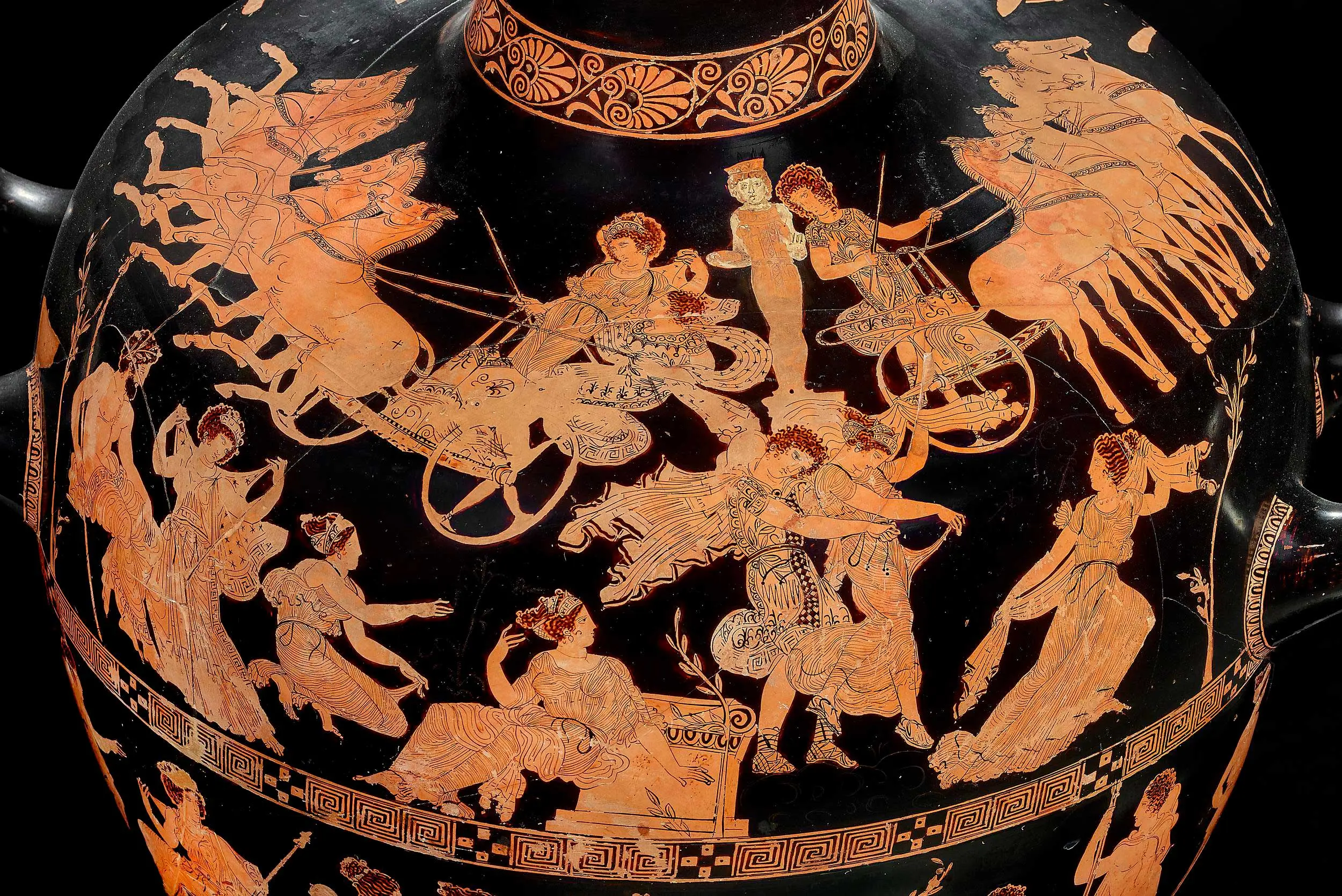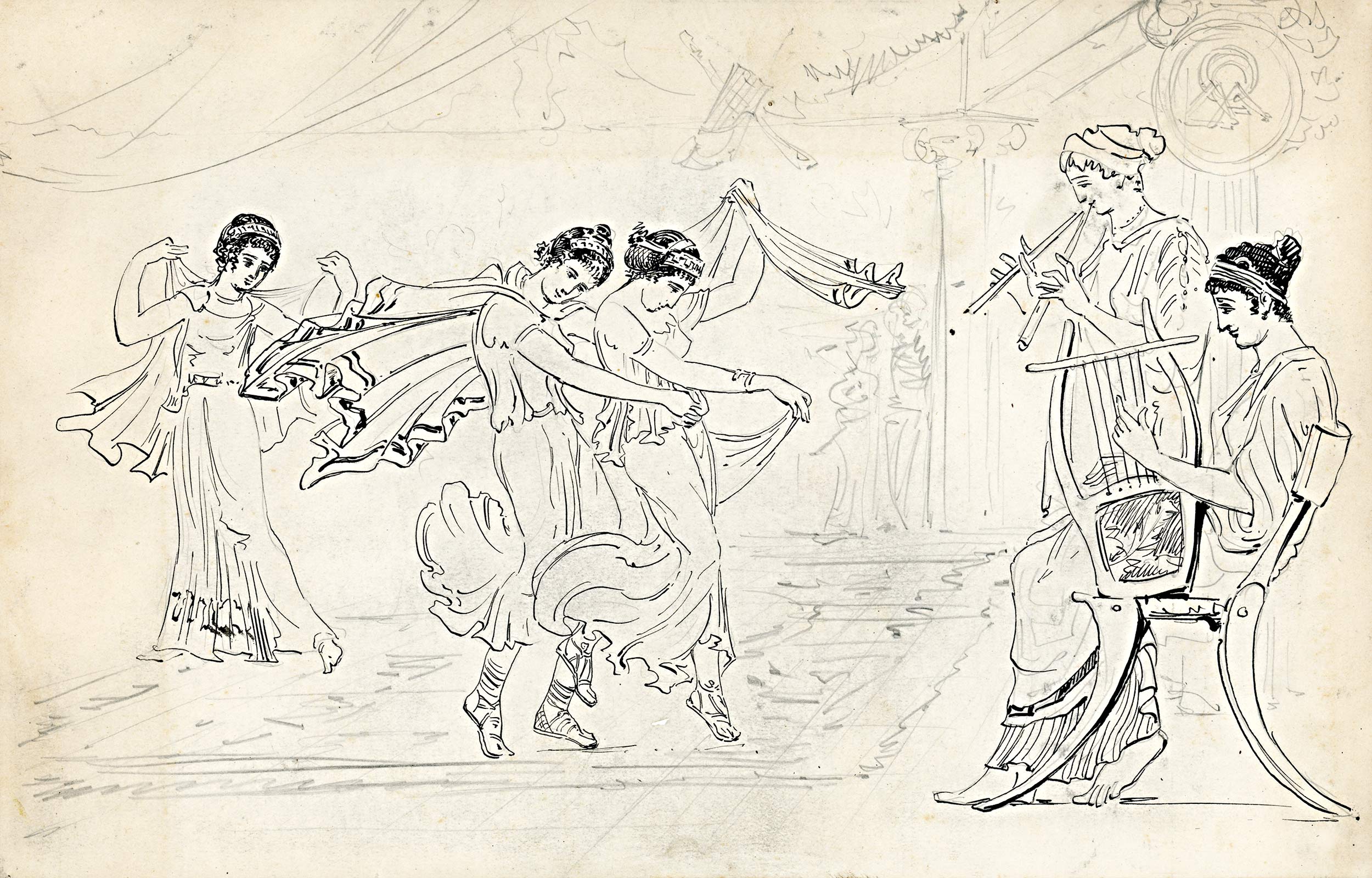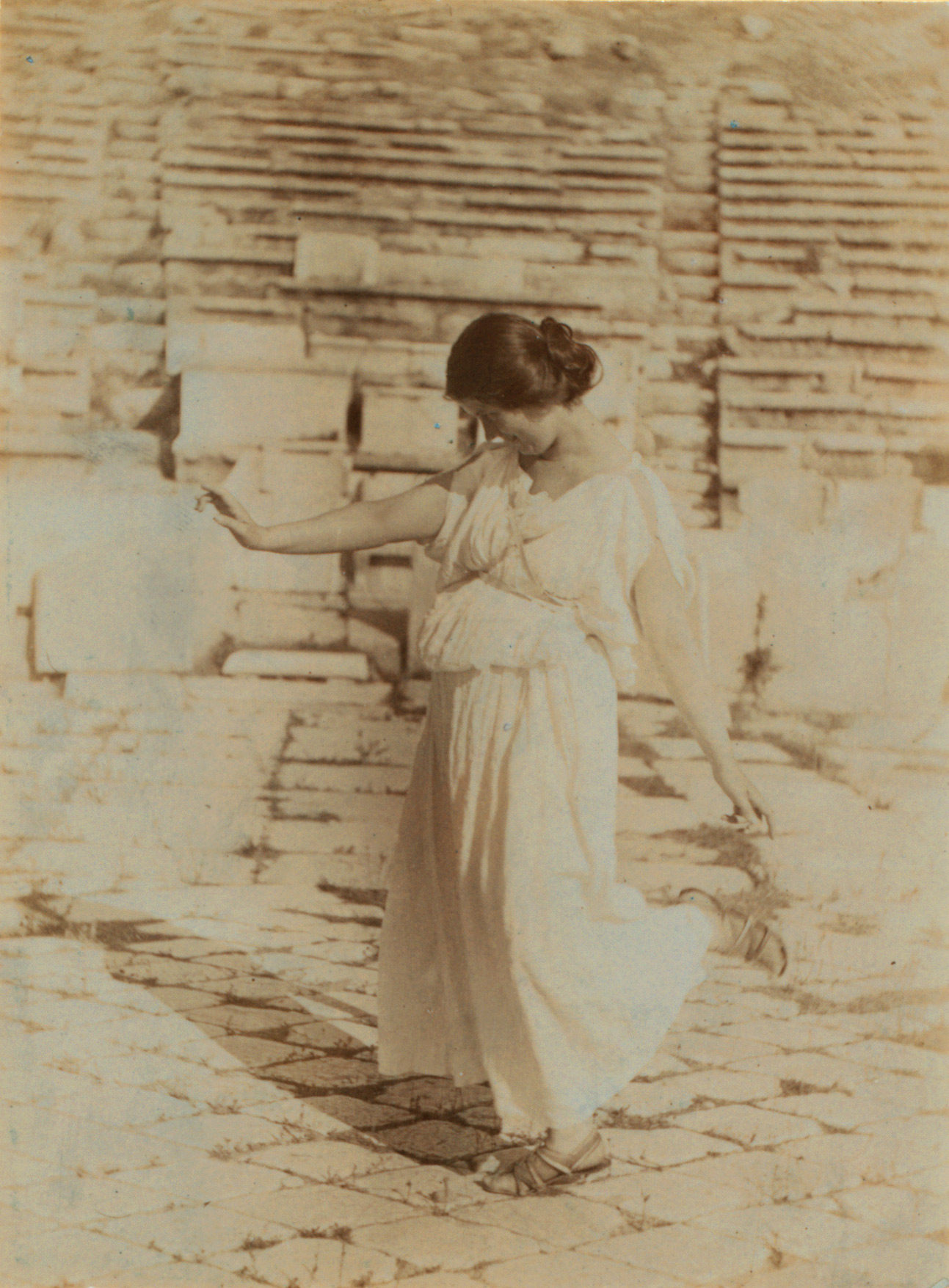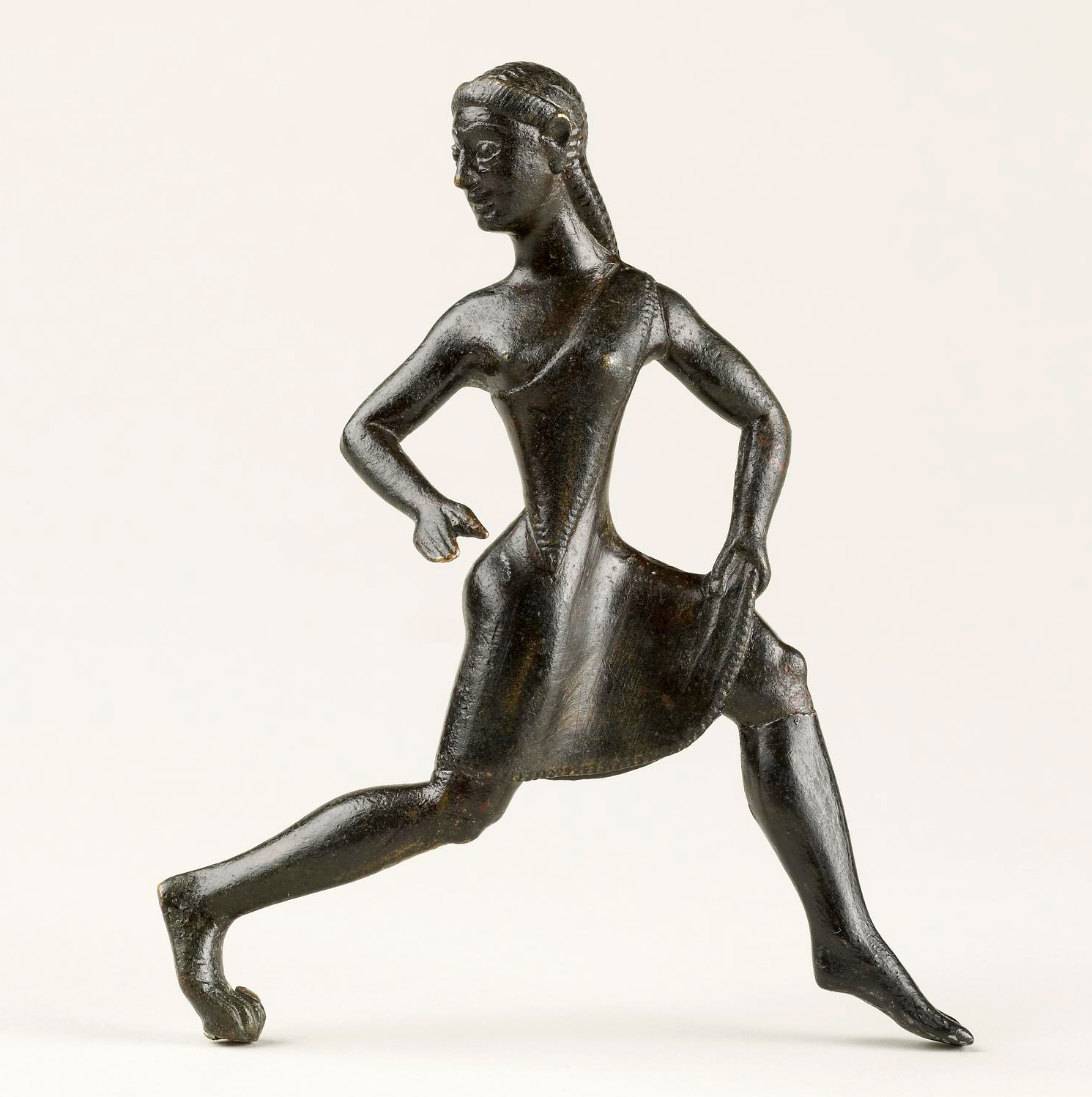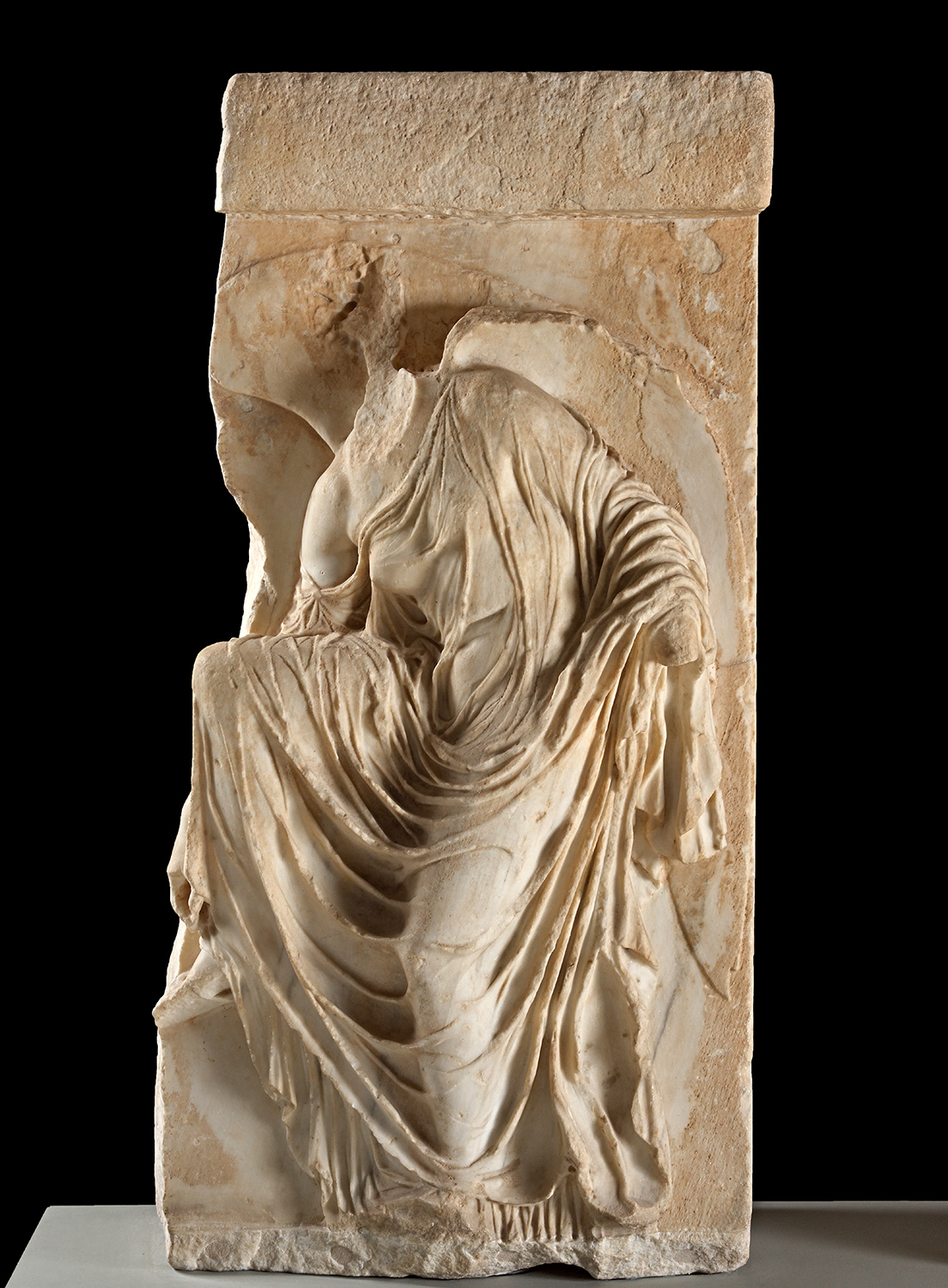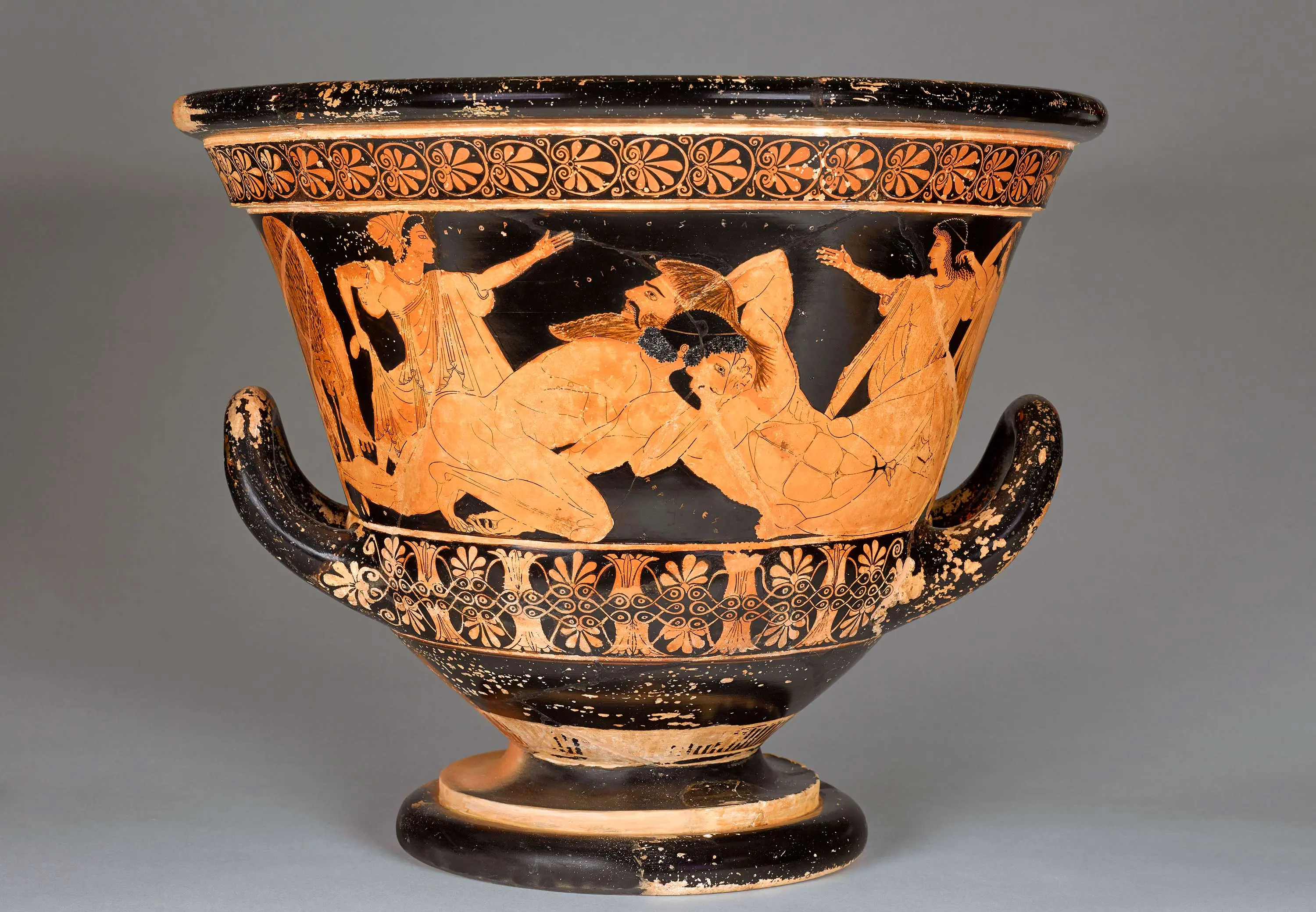
L’Olympisme
24 avril – 16 septembre 2024
De la grâce maniérée à la danse libéréeSignée par Meidias potier et attribuée au peintre de Meidias
Hydrie attique à figures rouges, détail
420-410 avant J.-C.
Londres, The British Museum, inv. 1772,0320.30+ (Vase E224)
Un enlèvement fort gracieux
Caractéristique du style dit fleuri de la fin du Ve siècle avant Jésus-Christ, le registre supérieur de cette hydrie réalisée à Athènes et signée par le peintre de Meidias représente l’enlèvement des filles du roi de Sparte Leucippe par les Dioscures, Castor et Pollux. Tandis que Castor entraîne l’une des jeunes filles sur son char, Pollux a saisi la seconde qui relève gracieusement son voile. En contrebas, Zeus, son épouse Héra et Athéna regardent la scène paisiblement, tandis que Peithô (la Persuasion) s’enfuit sur la droite, peut-être honteuse d’avoir incité les dieux à permettre ce forfait. Comme l'indique le geste de dévoilement, il s’agit en réalité d’une scène de mariage, marquée par la sophistication des vêtements, le raffinement des coiffures et la recherche de postures maniérées accentuant la féminité.
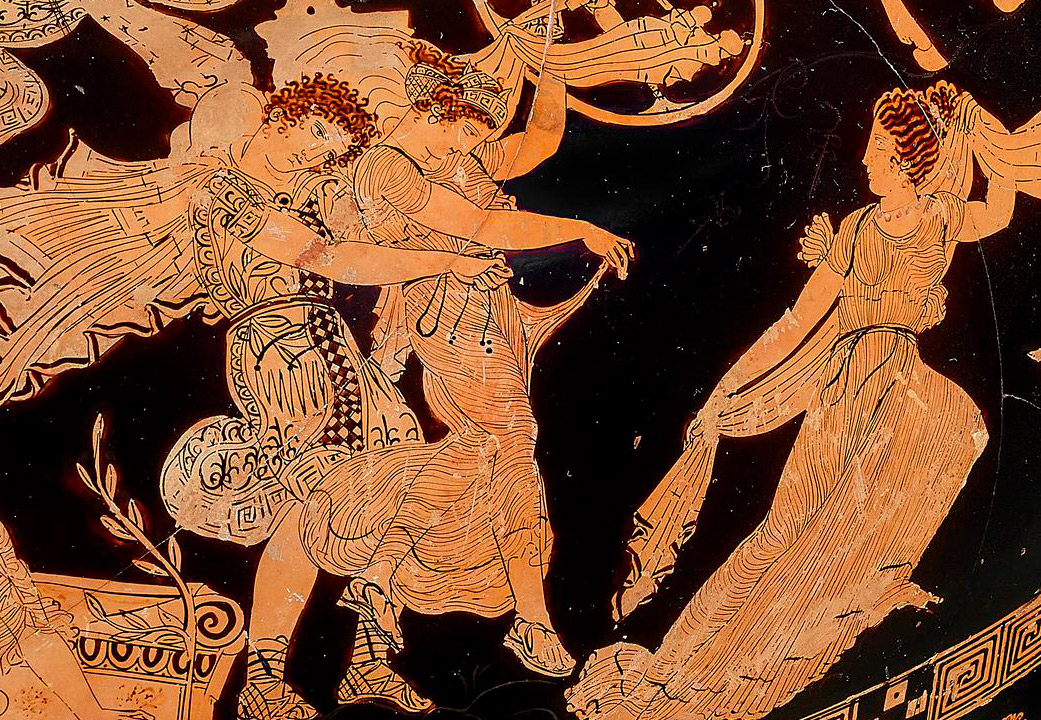
De Meidias à Gilliéron et à Isadora Duncan
Cette hydrie du British Museum a inspiré Gilliéron lorsqu’il a voulu montrer une scène de danse sur une carte postale commémorative créée pour les jeux intermédiaires qui eurent lieu en 1906. Le choix de ce thème gracieux est peut-être lié à la présence de la danseuse Isadora Duncan à Athènes pendant les années précédentes. Adepte d’une danse naturelle libérant le corps des contraintes de la danse classique, cette artiste trouva dans les œuvres antiques une source d’inspiration très féconde. Elle était guidée dans sa recherche par l’archéologue Alexandre Philadelpheus, lui-même ami d’Émile Gilliéron. Celui-ci aurait-il eu l’occasion de l’applaudir lors d’une soirée privée où la danseuse se produisait ? En tout cas, le choix de ce thème paraît inspiré directement ou indirectement par l’art chorégraphique de l’Américaine dont le style a aussi influencé les premières cérémonies olympiques.
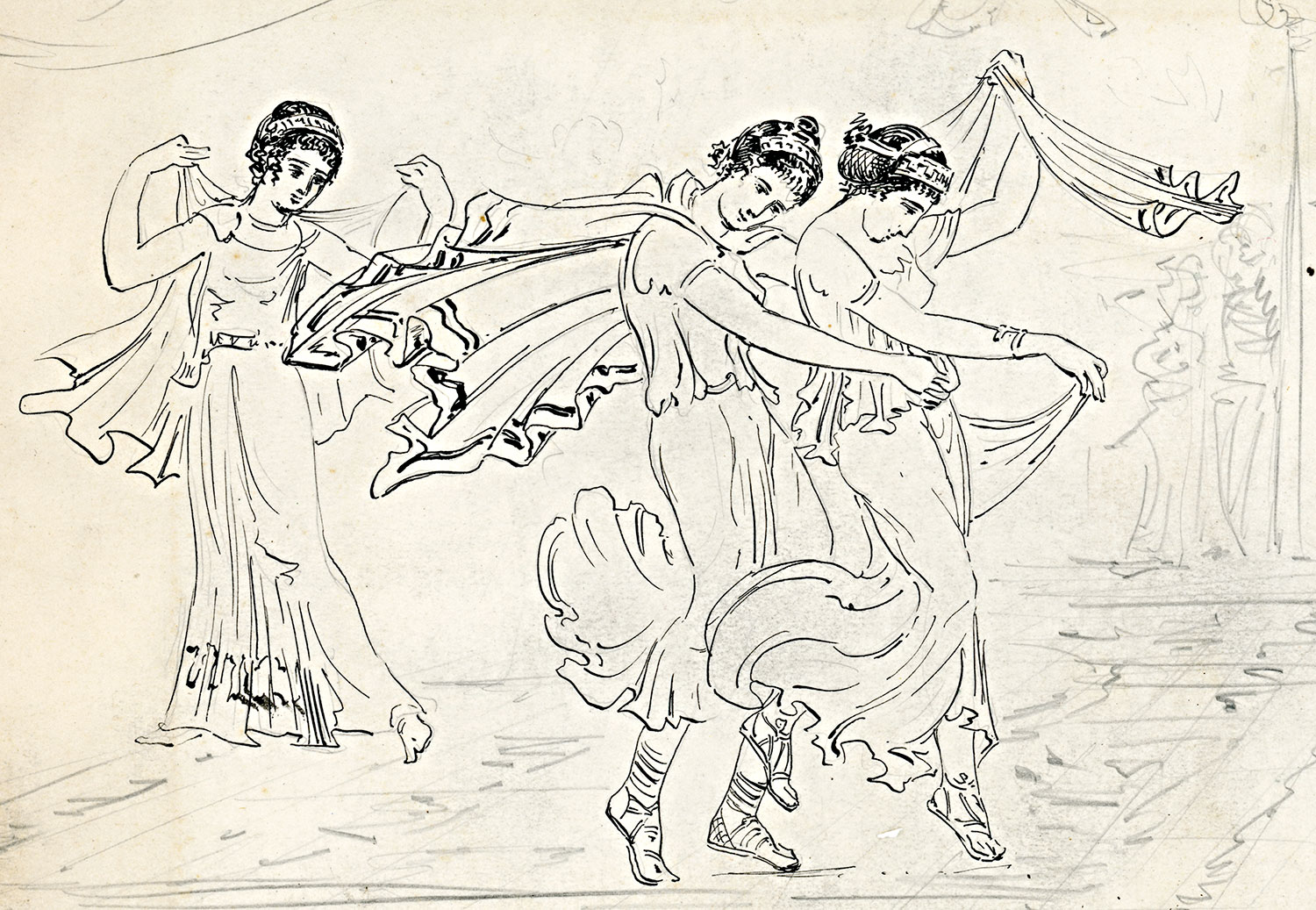
Les athlètes féminines dans l’Antiquité
Si les premiers jeux Olympiques modernes ont cantonné les femmes dans un rôle de faire-valoir, les Jeux antiques ne leur étaient pas davantage ouverts, à l’exception des courses de quadriges où de riches propriétaires pouvaient faire courir leur attelage. Il existait cependant à Olympie des jeux féminins, les Heraia, où les femmes pouvaient concourir. La petite figurine portant une tunique courte qui découvre l’un de ses seins pourrait être une athlète lacédémonienne ayant participé à ces jeux. Elle regarde en arrière dans la position caractéristique du coureur en tête qui se retourne pour estimer la progression de ses poursuivants. Mais les incertitudes sur sa provenance ne nous permettent guère d’en dire plus.
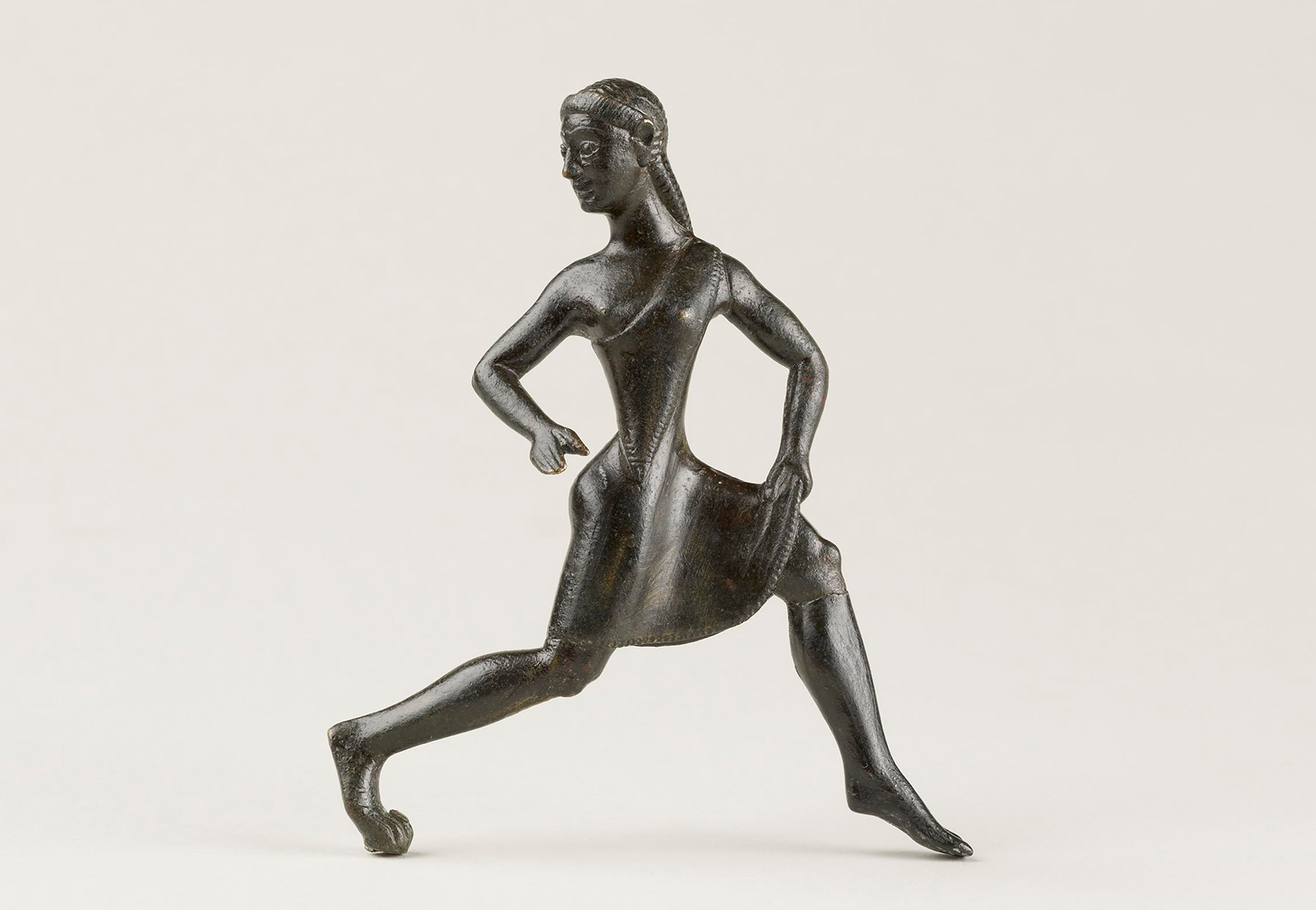
Sélection d'œuvres

Signée par Meidias potier et attribuée au peintre de Meidias, Hydrie attique à figures rouges. 420-410 avant J.-C. Londres, The British Museum, inv. 1772,0320.30+ (Vase E224)
1 sur 7
